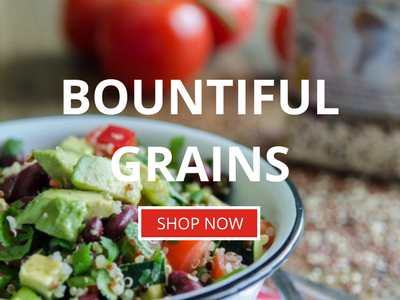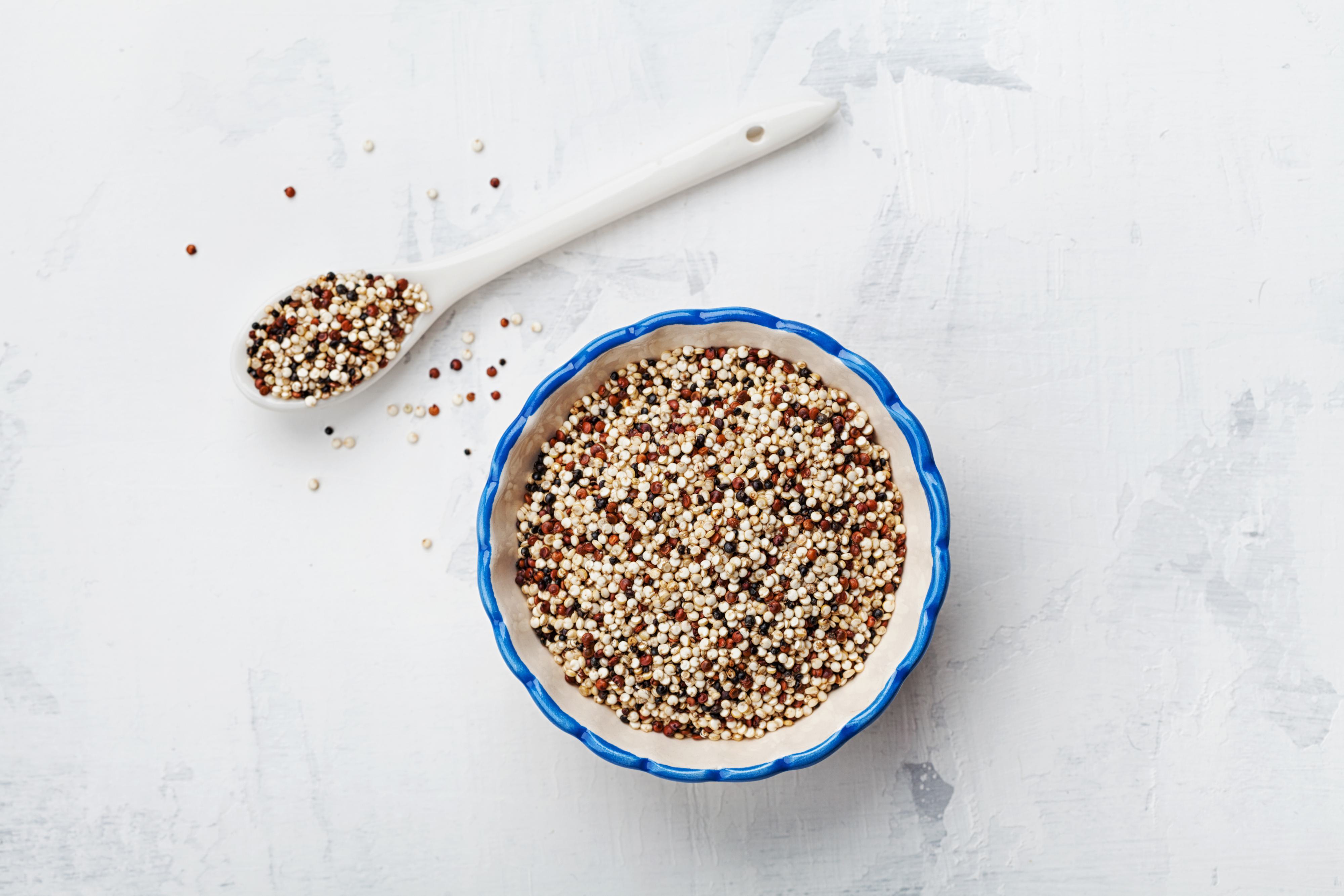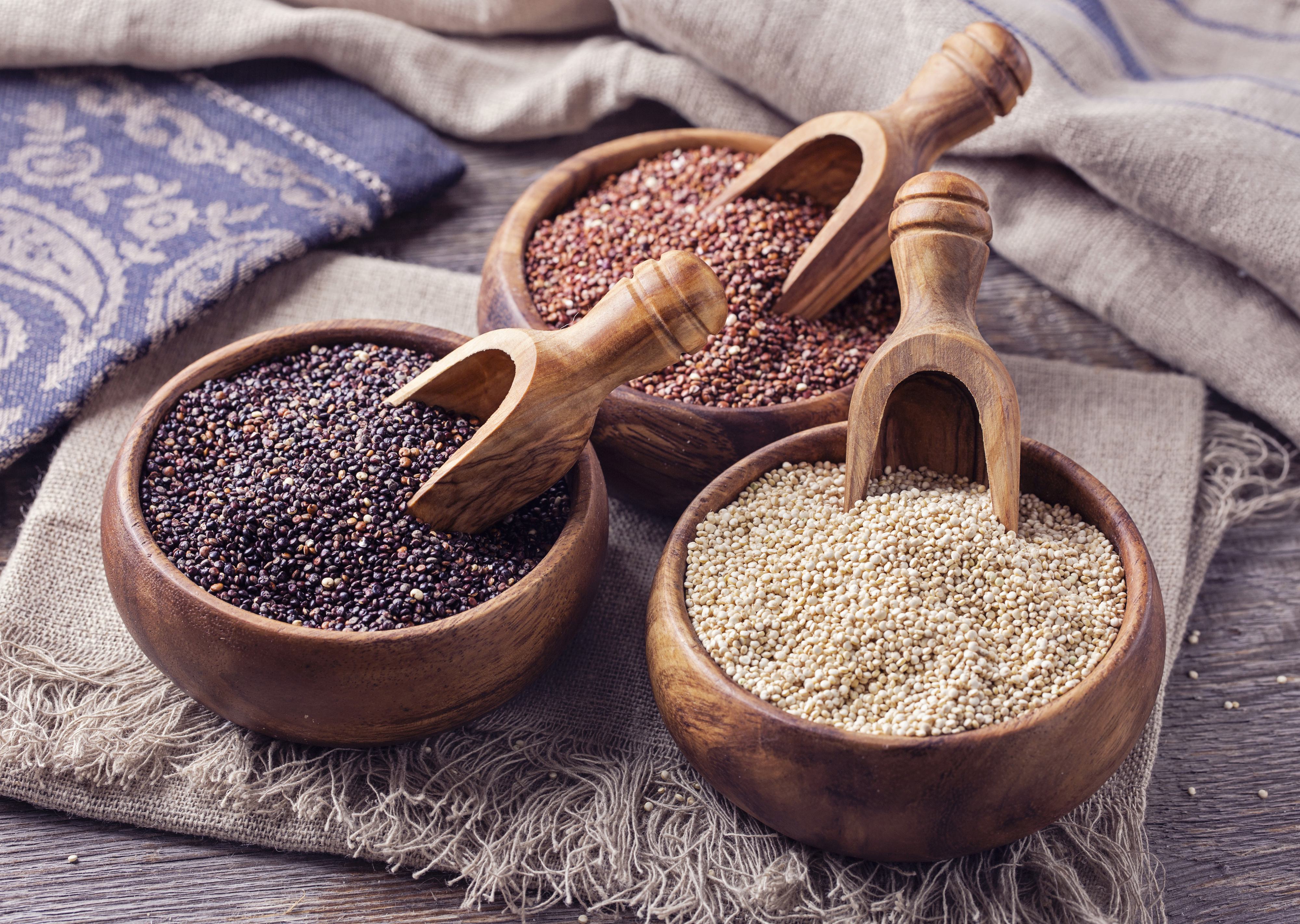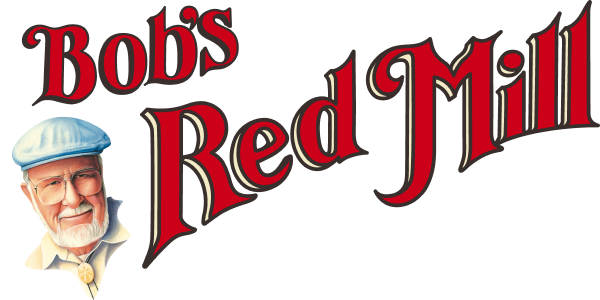With its growing popularity and incredible versatility, it seems as if quinoa has taken the health industry by storm. Celebrities, nutrition experts, and food lovers alike are raving about this incredible superfood and all the health benefits it has to offer. With everyone buzzing about how great quinoa is, not many people think about exactly what it is. More often than not,
quinoa is linked to the grain food group for its similar properties. Its ability to be a gluten free alternative to many wheat-filled foods makes it a desirable substitute for traditional gluten dishes such as bulgur. The truth is, quinoa is not a grain at all. To find out where exactly quinoa comes from, its important to look at the history behind it and how it came to be the superfood it is today.
Quinoa Around the World
Originating in the South American Andes, quinoa has been around for thousands of years and was an important part of society.
Ancient Incas deemed quinoa the mother grain and saw it as a sacred seed. So sacred, in fact, that traditions were built around
this ancient grain to pay tribute to its incredible health benefits. Following these traditions, the first quinoa seed of each year was planted with a golden shovel by the Inca leader and was used as the main food source to sustain the armies for long periods of time. However, as time went on, quinoa lost popularity and became an affordable crop that was grown by peasants for sustenance.
In recent years, the benefits of quinoa have risen to the health scene once again and it is no longer seen as a cheap meal, but an incredibly nutritious part of any diet.

Quinoa's popularity has grown tremendously in both the United States and Canada as it can now be found in natural food stores, along with most traditional grocery stores.
In Chile, Bolivia, and Peru, quinoa is a very popular source of nutrition and used in a wide variety of recipes, including soup, bread, and, even drinks. Other parts of the plant are also used for various purposes. In many places, the fruit of the quinoa plant is used as a topical medicine for cuts, sores, and bruises.
What Is Quinoa & What Food Group is Quinoa In?
Now we know where quinoa comes from and how people use it, but what exactly is it?
While quinoa is often prepared like a
cereal grain and considered by many to be in the grain food group, its actually a member of the spinach, chard, and beet family. Quinoa is the seed of the Chenopodium plant, a green leafy plant that sprouts numerous flowers. Occasionally, different parts of the plant are used for medicinal purposes, and the leaves are eaten as a vegetable. Still,
this ancient grain is mostly grown for its seeds which are cooked similarly to rice and can be used in a large variety of recipes. While quinoa can grow in many different weather conditions, it prefers a cool climate at a high elevation. The quinoa seed is a pseudocereal, as opposed to a grain. Pseudocereals are plants that produce seeds and fruits that are similar to grains and used in virtually the same ways. High in protein, nutrients, and vitamins, pseudocereals are most commonly gluten free and considered whole grains, despite not being a true grain. Other common pseudocereals are amaranth and buckwheat.
What Do the Different Colors of Quinoa Mean?

Quinoa seeds vary in color and there are over 120 different species of the Chenopodium plant. Despite this wide variety, only three main species are popularly grown. The most common colors are white, red, and black.
While the seeds are all very similar, there are differences between the colors that might be helpful to know when deciding which color to purchase.
White Quinoa
White quinoa, also known as tan quinoa, ivory quinoa, or simply "quinoa," is the most common color. Much like its color, white quinoa usually has a lighter taste than other varieties, and when cooked, offers a fluffier texture. Its light and airy texture makes it the perfect substitute for most rice dishes!
Red Quinoa
Red quinoa is similar to brown rice, as it has a nuttier flavor and richer taste than traditional white quinoa. Red quinoa is also a bit chewier than other varieties and holds its shape well during baking. This added structure makes it perfect for baked goods and salads.
Black Quinoa
Black quinoa, the darkest of the three, is the ideal quinoa to use in sweet dishes such as oatmeal and muffins. While black quinoa does provide a more earthy flavor than the other two, it is sweeter than white quinoa and holds its texture better.
How to Properly Cook Quinoa
An uncooked quinoa seed is oval in shape and have an outer germ layer around each. When cooked the seed becomes soft, while the outer germ layer remains crunchy and twists outwards away from the seed. The tail created by the germ is responsible for giving the soft quinoa its signature crunch. All shades of quinoa produce a light consistency and delicate flavor, making it an incredibly versatile seed.
Before Cooking
Its important to wash
the seeds before cooking quinoa, unless the package says they have been pre-rinsed. This is because quinoa seeds have a protective coating called saponin. While saponin does have a range of benefits itself, when left on the quinoa, it produces a bitter flavor.
In other parts of the world, the saponin from quinoa is used as a household detergent and for a wide variety of skin issues.
After Cooking
Cooked quinoa can be used in soups, stews, cookies, pasta, cereals, stuffings, and salads. Quinoa is relatively easy to cook and can be made in only 15 minutes. We like to call it the gateway grain because its so easy to cook. Quinoa flour is also commonly used to make various types of bread and muffins.
The Benefits of Quinoa
Quinoa is extremely high in protein, along with other vitamins and minerals such as calcium, and vitamin E. Deemed a complete protein, quinoa provides all nine essential amino acids. When compared to other grains, quinoa has nearly double the protein content of most, including brown rice, barley, and corn.
The dietary fiber in quinoa is also incredibly good for your gut! This fiber helps regulate the digestive system and may lower the risk of developing certain diseases and disorders. Dietary fiber also helps keep you fuller for longer periods of time, helping you fight hunger and avoid indulging in extra calories.
The iron in this complete protein plays a big role in keeping red blood cells healthy to form hemoglobin. This formation allows oxygen to be carried across cells and supplied to muscles. Our brains, metabolism, and enzymes also require large amounts of oxygen to function properly, meaning adequate amounts of iron are needed daily.
Magnesium is yet another mineral that this plant-based protein is extremely rich in. Magnesium is responsible for relaxing blood vessels, which in return help to reduce inflammation and relieve pain from common disorders such as migraines. Magnesium has also been attributed to helping reduce diabetes, control blood sugar, produce energy, detoxify the body, and form healthy teeth and bones.
Not to be confused with magnesium, manganese is also found in quinoa. This antioxidant helps prevent cell damage and keeps the body from being harmed by free radicals. Free radicals can cause damage to the mitochondria of a cell, which has been associated with serious illness and diseases such as cancer, Alzheimer's, and Parkinson's disease.
Quinoas ability to regulate cholesterol can have tremendous effects on heart health. The dietary flavonoids also found in quinoa have been shown to help protect the body from heart disease. While other foods drastically lose their nutrient quality upon being cooked, surprisingly, the nutrients in quinoa have been shown to withhold their quality even after being steamed and boiled. When compared to other gluten free alternatives and pastas, quinoa is often the most heart healthy choice!
Quinoas role in diabetes has long been studied to determine if its more effective than
refined grains and legumes at managing the disease. The antioxidant quercetin found in quinoa has an extremely high antioxidant count and has been associated with the successful management of both diabetes and hypertension when consumed regularly.
Quinoa can even be made into a drink. For many years, Central and South American cultures have used quinoa in a traditional beverage known as Chincha. Chincha can be both fermented and unfermented. It is widely popular and often served at social gatherings. Depending on where you drink it, the benefits and taste change drastically.
Is Quinoa Gluten Free?

Quinoa seeds are naturally gluten free, making them a healthy alternative to many gluten-containing grains, especially for those suffering from celiac disease. Quinoa seeds are also fairly easy to digest, which helps prevent stomach discomfort. Adding quinoa to gluten free products has become a very popular practice and has been found to increase a products polyphenol content. These polyphenols help to protect the cells against damage, and most gluten free foods are lacking in them.
Things to Consider If You Have Celiac Disease
While quinoa is more nutritionally rich than its gluten counterparts, if you have a gluten intolerance, there are still things worth considering before making quinoa your new favorite substitution.
Check where it was processed: many times, while the quinoa itself may be gluten free, that factory in which it was processed might not be. This makes it incredibly easy for cross-contamination to occur. Its important to make sure that before purchasing quinoa, you read the labels and check that it has been processed in a gluten free facility allowing for minimal chances of gluten to enter the package.
Is Quinoa Paleo?
Its widely known that grains are not acceptable when following a gluten free paleo diet, and now that we know that quinoa is not a grain, does that also make it paleo? While many other seeds are allowed when following a paleo diet, quinoa contains many of the same properties as grains, which leads some to question if it falls within paleo standards.
Grains are avoided on the paleo diet because, to make them edible, they must be heavily processed, and processed foods are what the paleo diet is designed to avoid.
Is Quinoa Good for You?
This question is largely open to personal interpretation. Whether quinoa is good or bad for you is based on your bodys ability to process it properly. Quinoa is loaded with vitamins, minerals, and antioxidants that can have incredible benefits on your physical and mental health. Your dietary needs and restrictions also play a huge role in determining if quinoa is the right choice for you.
While quinoa benefits most individuals and is a great source of plant-based protein, it is noted that those with celiac disease or digestion problems may want to slowly introduce quinoa into their diets. If you have previous digestive disorders it is smart to consult your doctor before trying any new foods. Most individuals do not have reactions when eating quinoa and are amazed by the amount of protein and nutrients it provides.
Sources:
https://ultimatepaleoguide.com/is-quinoa-paleo-a-deep-dive/
https://www.huffpost.com/entry/quinoa-is-not-a-grain_n_59380558e4b0aba888ba7b44
https://www.webmd.com/food-recipes/features/why-is-quinoa-good-for-me



 Quinoa's popularity has grown tremendously in both the United States and Canada as it can now be found in natural food stores, along with most traditional grocery stores.
In Chile, Bolivia, and Peru, quinoa is a very popular source of nutrition and used in a wide variety of recipes, including soup, bread, and, even drinks. Other parts of the plant are also used for various purposes. In many places, the fruit of the quinoa plant is used as a topical medicine for cuts, sores, and bruises.
Quinoa's popularity has grown tremendously in both the United States and Canada as it can now be found in natural food stores, along with most traditional grocery stores.
In Chile, Bolivia, and Peru, quinoa is a very popular source of nutrition and used in a wide variety of recipes, including soup, bread, and, even drinks. Other parts of the plant are also used for various purposes. In many places, the fruit of the quinoa plant is used as a topical medicine for cuts, sores, and bruises.
 Quinoa seeds vary in color and there are over 120 different species of the Chenopodium plant. Despite this wide variety, only three main species are popularly grown. The most common colors are white, red, and black.
While the seeds are all very similar, there are differences between the colors that might be helpful to know when deciding which color to purchase.
White Quinoa
White quinoa, also known as tan quinoa, ivory quinoa, or simply "quinoa," is the most common color. Much like its color, white quinoa usually has a lighter taste than other varieties, and when cooked, offers a fluffier texture. Its light and airy texture makes it the perfect substitute for most rice dishes!
Red Quinoa
Red quinoa is similar to brown rice, as it has a nuttier flavor and richer taste than traditional white quinoa. Red quinoa is also a bit chewier than other varieties and holds its shape well during baking. This added structure makes it perfect for baked goods and salads.
Black Quinoa
Black quinoa, the darkest of the three, is the ideal quinoa to use in sweet dishes such as oatmeal and muffins. While black quinoa does provide a more earthy flavor than the other two, it is sweeter than white quinoa and holds its texture better.
Quinoa seeds vary in color and there are over 120 different species of the Chenopodium plant. Despite this wide variety, only three main species are popularly grown. The most common colors are white, red, and black.
While the seeds are all very similar, there are differences between the colors that might be helpful to know when deciding which color to purchase.
White Quinoa
White quinoa, also known as tan quinoa, ivory quinoa, or simply "quinoa," is the most common color. Much like its color, white quinoa usually has a lighter taste than other varieties, and when cooked, offers a fluffier texture. Its light and airy texture makes it the perfect substitute for most rice dishes!
Red Quinoa
Red quinoa is similar to brown rice, as it has a nuttier flavor and richer taste than traditional white quinoa. Red quinoa is also a bit chewier than other varieties and holds its shape well during baking. This added structure makes it perfect for baked goods and salads.
Black Quinoa
Black quinoa, the darkest of the three, is the ideal quinoa to use in sweet dishes such as oatmeal and muffins. While black quinoa does provide a more earthy flavor than the other two, it is sweeter than white quinoa and holds its texture better.
 Quinoa seeds are naturally gluten free, making them a healthy alternative to many gluten-containing grains, especially for those suffering from celiac disease. Quinoa seeds are also fairly easy to digest, which helps prevent stomach discomfort. Adding quinoa to gluten free products has become a very popular practice and has been found to increase a products polyphenol content. These polyphenols help to protect the cells against damage, and most gluten free foods are lacking in them.
Things to Consider If You Have Celiac Disease
While quinoa is more nutritionally rich than its gluten counterparts, if you have a gluten intolerance, there are still things worth considering before making quinoa your new favorite substitution.
Check where it was processed: many times, while the quinoa itself may be gluten free, that factory in which it was processed might not be. This makes it incredibly easy for cross-contamination to occur. Its important to make sure that before purchasing quinoa, you read the labels and check that it has been processed in a gluten free facility allowing for minimal chances of gluten to enter the package.
Is Quinoa Paleo?
Its widely known that grains are not acceptable when following a gluten free paleo diet, and now that we know that quinoa is not a grain, does that also make it paleo? While many other seeds are allowed when following a paleo diet, quinoa contains many of the same properties as grains, which leads some to question if it falls within paleo standards.
Grains are avoided on the paleo diet because, to make them edible, they must be heavily processed, and processed foods are what the paleo diet is designed to avoid.
Is Quinoa Good for You?
This question is largely open to personal interpretation. Whether quinoa is good or bad for you is based on your bodys ability to process it properly. Quinoa is loaded with vitamins, minerals, and antioxidants that can have incredible benefits on your physical and mental health. Your dietary needs and restrictions also play a huge role in determining if quinoa is the right choice for you.
While quinoa benefits most individuals and is a great source of plant-based protein, it is noted that those with celiac disease or digestion problems may want to slowly introduce quinoa into their diets. If you have previous digestive disorders it is smart to consult your doctor before trying any new foods. Most individuals do not have reactions when eating quinoa and are amazed by the amount of protein and nutrients it provides.
Sources:
https://ultimatepaleoguide.com/is-quinoa-paleo-a-deep-dive/
https://www.huffpost.com/entry/quinoa-is-not-a-grain_n_59380558e4b0aba888ba7b44
https://www.webmd.com/food-recipes/features/why-is-quinoa-good-for-me
Quinoa seeds are naturally gluten free, making them a healthy alternative to many gluten-containing grains, especially for those suffering from celiac disease. Quinoa seeds are also fairly easy to digest, which helps prevent stomach discomfort. Adding quinoa to gluten free products has become a very popular practice and has been found to increase a products polyphenol content. These polyphenols help to protect the cells against damage, and most gluten free foods are lacking in them.
Things to Consider If You Have Celiac Disease
While quinoa is more nutritionally rich than its gluten counterparts, if you have a gluten intolerance, there are still things worth considering before making quinoa your new favorite substitution.
Check where it was processed: many times, while the quinoa itself may be gluten free, that factory in which it was processed might not be. This makes it incredibly easy for cross-contamination to occur. Its important to make sure that before purchasing quinoa, you read the labels and check that it has been processed in a gluten free facility allowing for minimal chances of gluten to enter the package.
Is Quinoa Paleo?
Its widely known that grains are not acceptable when following a gluten free paleo diet, and now that we know that quinoa is not a grain, does that also make it paleo? While many other seeds are allowed when following a paleo diet, quinoa contains many of the same properties as grains, which leads some to question if it falls within paleo standards.
Grains are avoided on the paleo diet because, to make them edible, they must be heavily processed, and processed foods are what the paleo diet is designed to avoid.
Is Quinoa Good for You?
This question is largely open to personal interpretation. Whether quinoa is good or bad for you is based on your bodys ability to process it properly. Quinoa is loaded with vitamins, minerals, and antioxidants that can have incredible benefits on your physical and mental health. Your dietary needs and restrictions also play a huge role in determining if quinoa is the right choice for you.
While quinoa benefits most individuals and is a great source of plant-based protein, it is noted that those with celiac disease or digestion problems may want to slowly introduce quinoa into their diets. If you have previous digestive disorders it is smart to consult your doctor before trying any new foods. Most individuals do not have reactions when eating quinoa and are amazed by the amount of protein and nutrients it provides.
Sources:
https://ultimatepaleoguide.com/is-quinoa-paleo-a-deep-dive/
https://www.huffpost.com/entry/quinoa-is-not-a-grain_n_59380558e4b0aba888ba7b44
https://www.webmd.com/food-recipes/features/why-is-quinoa-good-for-me